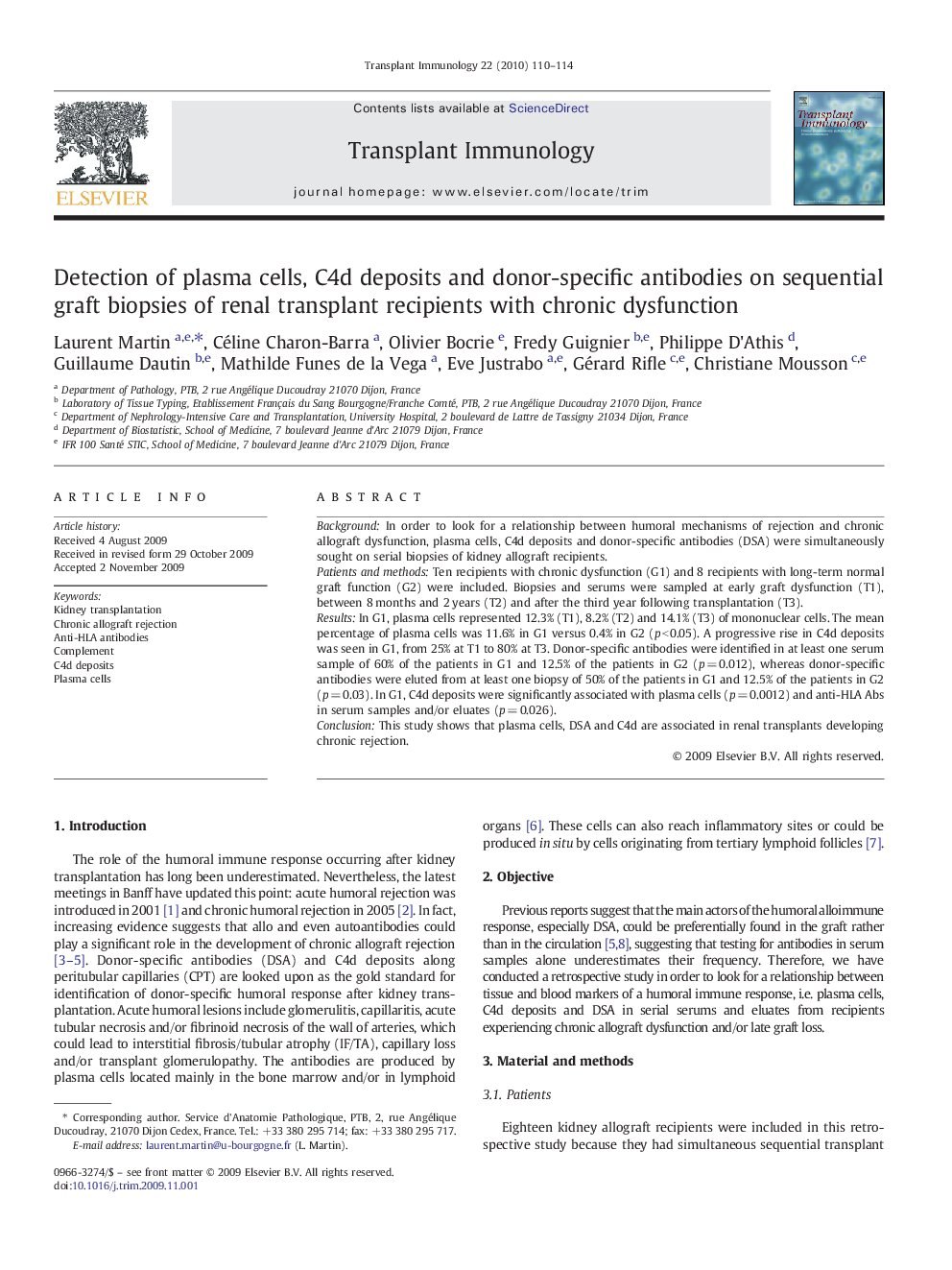| Article ID | Journal | Published Year | Pages | File Type |
|---|---|---|---|---|
| 3392356 | Transplant Immunology | 2010 | 5 Pages |
BackgroundIn order to look for a relationship between humoral mechanisms of rejection and chronic allograft dysfunction, plasma cells, C4d deposits and donor-specific antibodies (DSA) were simultaneously sought on serial biopsies of kidney allograft recipients.Patients and methodsTen recipients with chronic dysfunction (G1) and 8 recipients with long-term normal graft function (G2) were included. Biopsies and serums were sampled at early graft dysfunction (T1), between 8 months and 2 years (T2) and after the third year following transplantation (T3).ResultsIn G1, plasma cells represented 12.3% (T1), 8.2% (T2) and 14.1% (T3) of mononuclear cells. The mean percentage of plasma cells was 11.6% in G1 versus 0.4% in G2 (p < 0.05). A progressive rise in C4d deposits was seen in G1, from 25% at T1 to 80% at T3. Donor-specific antibodies were identified in at least one serum sample of 60% of the patients in G1 and 12.5% of the patients in G2 (p = 0.012), whereas donor-specific antibodies were eluted from at least one biopsy of 50% of the patients in G1 and 12.5% of the patients in G2 (p = 0.03). In G1, C4d deposits were significantly associated with plasma cells (p = 0.0012) and anti-HLA Abs in serum samples and/or eluates (p = 0.026).ConclusionThis study shows that plasma cells, DSA and C4d are associated in renal transplants developing chronic rejection.
